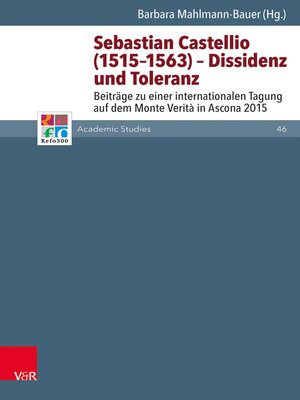Sebastian Castellio (1515–1563) – Dissidenz und Toleranz
ebook ∣ Beiträge zu einer internationalen Tagung auf dem Monte Verità in Ascona 2015 · Refo500 Academic Studies (R5AS)
By Barbara Mahlmann-Bauer

Sign up to save your library
With an OverDrive account, you can save your favorite libraries for at-a-glance information about availability. Find out more about OverDrive accounts.
Find this title in Libby, the library reading app by OverDrive.



Search for a digital library with this title
Title found at these libraries:
| Loading... |
Castellio's plea for religious tolerance and his refusal of prosecution of dissenters are as relevant today as they had been in 1554 when Michel Servet's burning at the stake occasioned Castellio's protest. The articles analyze Castellio's anonymous treaty De haereticis an sint persequendi (in Roland H. Bainton's translation: Concerning heretics) in the original context and the world of religious dissent around Basel. Castellio instigated debates about tolerance which proved to be crucial for the self-fashioning of protestantism and the claim for a reformatio continua. Castellio's lesser known writings also argue for religious ideas and basic moral norms about which agreement can reached beyond confessional controversies. His vision of various religious communities which peacefully interact under the roof of a neutral government still inspires interreligious discourse today. When Spinoza is praised for the idea of a society where liberty of conscience is granted as a prerequisite for prosperity and peace, Castellio and his allies provided him the tools for such a modern vision of how a neutral state may enhance individual enterprise and pursuit of happiness.






